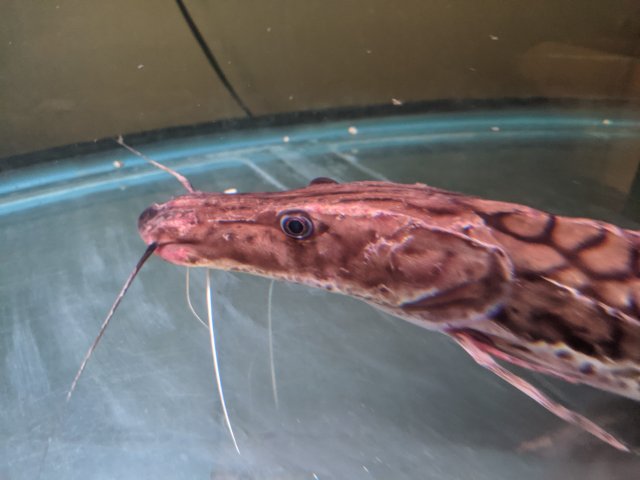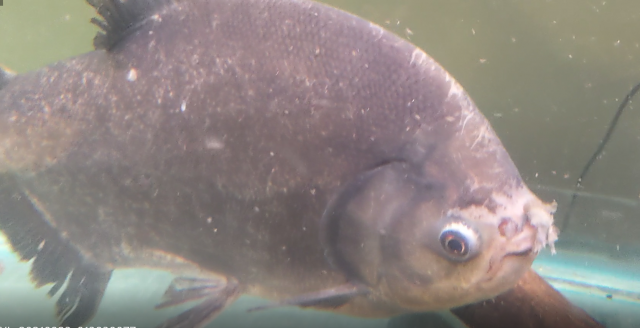- Have you tested your water?
- Yes
- If yes, what is your ammonia?
- 0
- If yes, what is your nitrite?
- 0
- If yes, what is your nitrate?
- 50
- If I did not test my water...
- ...I recognize that I will likely be asked to do a test, and that water tests are critical for solving freshwater health problems.
- Do you do water changes?
- Yes
- What percentage of water do you change?
- 31-40%
- How frequently do you change your water?
- Every month
- If I do not change my water...
- ...I recognize that I will likely be recommended to do a water change, and water changes are critical for preventing future freshwater health problems.
I have 2 pacu and a TSN in a 220-gal that have recently been moved to a new house that are experiencing slimecoat and skin issues. Cottony stuff is mostly gone at this point, but skin/scales and fins still look rough and are not healing. I believe the issues are a result of both the move (mostly fin damage) and the slimecoat problem. I don't think it's fungal, or that's not the main issue, or a parasite. If I can correct the slimecoat, I think everything will correct itself and they can be saved, but I'm not entirely sure what is causing this issue. I have checked and double checked all parameters. pH - 8.0, Ammonia and nitrite zero, Nitrate 50ppm, gH 400+ppm, kH - 160ppm. My current concern is the pH, is 8.0 too high for these species? Perhaps this is the problem. My source water is from a well, hard but no chlorine, tests at pH 7.2. So why is the tank climbing to 8.0? Too much oxygenating from the spray bar in my sump?
Things I have tried thus far:
1. Water change (temporary visual improvement to the health and behavior of the fish, but next day right back to what it was)
2. Stress coat
3. Melafix (2 doses so far)
4. Salt
5. Stress zyme
I brought my sump along with the established bacteria and hooked it back up after the move. Part of the media dried out and removing the substrate also probably removed most of the cultures. So I expect the tank may not be properly cycled, but it's been almost a week now and I expect that It would be doing better by now.
Do you guys think the pH could really be the issue here? Is there a good method to reduce? I'm fairly alkaline so I can't imagine reduction will be easy.



Things I have tried thus far:
1. Water change (temporary visual improvement to the health and behavior of the fish, but next day right back to what it was)
2. Stress coat
3. Melafix (2 doses so far)
4. Salt
5. Stress zyme
I brought my sump along with the established bacteria and hooked it back up after the move. Part of the media dried out and removing the substrate also probably removed most of the cultures. So I expect the tank may not be properly cycled, but it's been almost a week now and I expect that It would be doing better by now.
Do you guys think the pH could really be the issue here? Is there a good method to reduce? I'm fairly alkaline so I can't imagine reduction will be easy.









